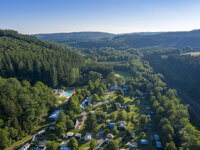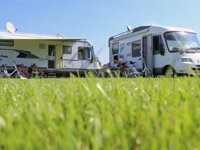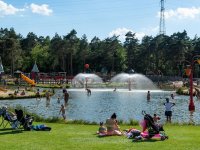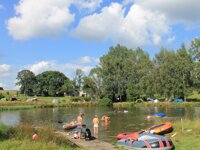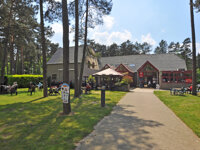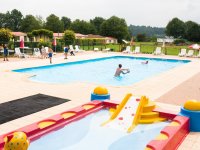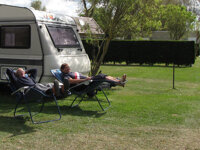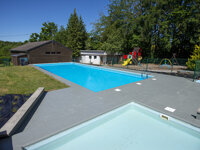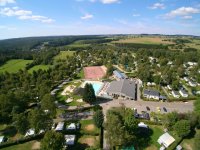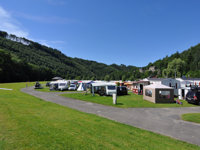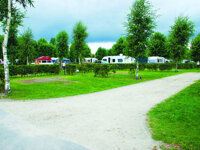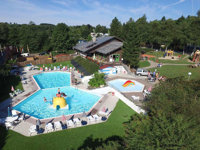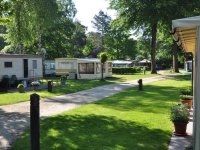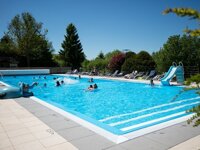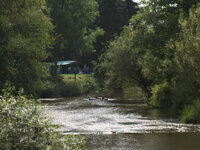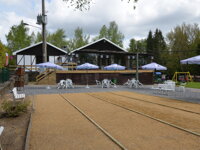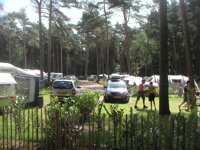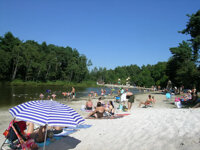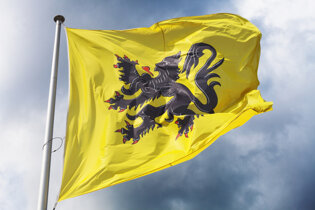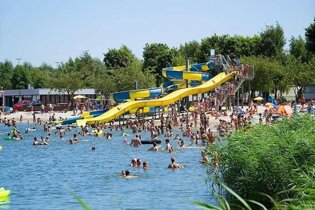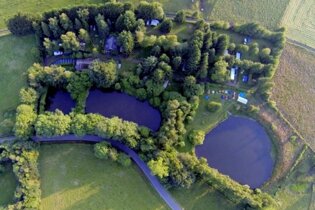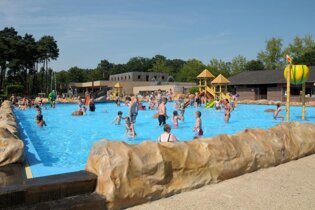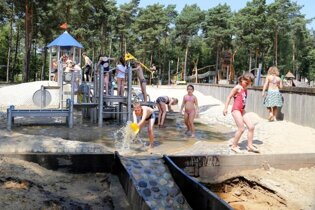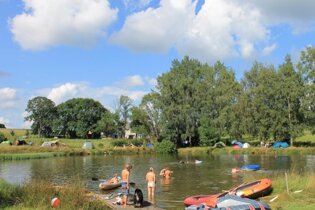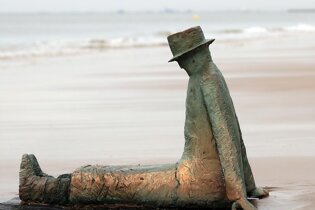Camping in Belgium
88 campsites in Belgium
Campsite Listing Google Map
The following consent is required:
Tracking & performance, Targeting & advertising.
Belgium
A small country divided into three regions, Flanders in the north, Wallonia in the south and Brussels, the capital. Belgium is rich in scenic countryside, culture and history, notably the great forest of Ardennes, the historic cities of Bruges and Ghent and the western coastline with its sandy beaches.
Belgium offers some of Europe’s most picturesque scenery: ancient towns, unspoilt countryside, forested hills. And, yes, there is plenty of beer, waffles and chocolate, which in Belgium all count as ‘cultural interest’. Not to mention its comic book heritage (think Tintin but also a whole lot more, on an industrial scale).
Belgium is a great base from which to explore the medieval towns, the charming byways and the big-name historical sites like Waterloo and the monuments of World War One.
Above all, it’s a place to linger and get to know. All too often, tourists pass through, hurrying on their way north to the Netherlands and beyond or south into France. Belgium deserves more attention than that, and those who do linger and explore will be rewarded with superb landscapes and uncrowded hot spots.
Flanders

Dutch-speaking Flanders is largely flat like the neighbouring Netherlands and is studded by three of Belgium’s most famous cities.
Antwerp is home to the dramatic Renaissance Town Hall, the stunning 16th century Grote Markt (Market Square) and the huge port. It is also the world’s epicentre of diamond trading and cutting.
Bruges with its network of canals and especially its famous 83m Belfort Tower, dating from 1240, is another historic Belgian jewel. The magnificent market square and cloth hall (Lakenhalle) are must-see places. Quite simply, Bruges is Europe’s best preserved medieval city, a labyrinth of cobbled streets linking wide open squares and crisscrossed by a network of willow-lined canals.
Aside from the museums and galleries, there are the obvious delights of the famous Bruges chocolate shops. In times past Ghent was the 4th largest city in Europe. Plenty of historic buildings remain including the 12th century Castle of the Counts, complete with crenellated towers, moat and a dungeon. Among its remarkably well preserved medieval architectural gems are St Bravo’s cathedral, with origins dating back to 942 and artwork by van Eyck and Rubens.
The safe, sandy beaches on the west coast run for forty miles. The cosmopolitan resort of Ostend with its yacht basin and harbour offers year-round attractions including a carnival weekend and a Christmas market, as well as myriad seafood restaurants.
Wallonia

French-speaking Wallonia is the picturesque southern region that incorporates rustic villages nestled in the undulating verdant countryside.
Popular with nature lovers and walkers who enjoy exploring the many castles and forts, the Belgian Ardennes are a major attraction for walkers and outdoors enthusiasts. Here the landscape is interlaced with rivers for kayaking, underground caves for exploring and handy slopes for occasional skiing in the whitest of winters.
Durbuy is one of the most beautiful villages in the Ardennes – it’s like stepping back in time as you stroll the 14th-century streets around the castle, pausing to admire the tiny brewery and Europe’s largest topiary garden.
The safe, sandy beaches on the west coast run for more than sixty kilometres. Here lies Ostend, a popular seaside resort with an eight kilometre long beach and a promenade coupled with a bustling harbour and shops.
Wallonia’s wild and wooded Ardennes region stretches down into Luxembourg and is a lovely quiet corner with a sprinkling of country towns. One of the most appealing of these is Chimay, which has a ruined medieval castle and nature reserve nearby. Medieval Tournai and Mons, with its magnificent central square and a fascinating medieval quarter, are historical gems worthy of a visit.
The dramatic fortress town of Namur is the region’s capital, at the head of the rivers Meuse and Sambre.
Brussels

Brussels is at the very heart of Europe and doubles as the capital of the European Union. A multi-cultural and multi-lingual city full of remarkable monuments, interesting museums and highly acclaimed restaurants. There’s a host of world-class sites. The Grande Place is sometimes referred to as the most beautiful square in the world – its Gothic town hall is stunning. The Royal Palace is bigger than Buckingham Palace. The Law Courts – inspired by the temples of ancient Egypt. The European Parliament is huge and reeks of a big budget ‘grand projet’ - the scene of so much European legislation.
Battlefields
Waterloo - Just 18km south of Brussels, Waterloo was the scene of Napoleon’s defeat by the Duke of Wellington and the Prussians on 18 June 1815. There are plenty of museums but little of tangible evidence remains. The 40m high Lion’s Mound was created shortly after the battle as a memorial.
Ypres - This was the scene of some of the bloodiest fighting during the Great War 1914-1918. The city was virtually destroyed with 300,000 Allied soldiers killed preventing the Germans reaching the strategically important port of Calais. The Cloth Hall was rebuilt and today houses the In Flanders Fields Museum.
Belgian beer
One essential while camping in Belgium is a cold Belgian beer. Whether you sample this delight over lunch or after a long day exploring, whether you choose a blonde ale or a Flemish red, it’s one of the simple pleasures you mustn’t miss. There are at least 1,100 so stop in a local café to taste a beer or two and watch the world go by.
Belgian cuisine

Belgian cuisine is a diverse mix of influences from its neighboring countries, France, Germany, and the Netherlands, as well as its own unique regional traditions. It is known for its hearty dishes, made with fresh, seasonal ingredients, as well as its delicious desserts and chocolates.
One of the most iconic Belgian dishes is moules frites, or mussels with fries. This simple but delicious dish is made with fresh mussels, cooked in a variety of ways, and served with a side of crispy, double-fried fries. It is a popular dish all over Belgium, and can be found at most restaurants and cafes.
Another Belgian classic is flemish stew, a hearty stew made with beef, onions, beer, and herbs. It is typically served with a side of bread or fries.
Other popular Belgian dishes include:
- Waterzooi: A creamy stew made with chicken or fish, vegetables, and herbs.
- Stoemp: A mashed potato dish with various additions, such as sausage, onions, or carrots.
- Carbonnade flamande: A beef stew made with beer and onions.
- Chicons au gratin: Belgian endives wrapped in ham and béchamel sauce, and baked in the oven.
- Boulets à la liégeoise: Meatballs made with pork, beef, and onions, and served with a sweet and sour sauce.
- Waffles: Belgian waffles are light and fluffy, and can be eaten sweet or savory. They are often served with fresh fruit, chocolate, or whipped cream.
Belgium is also known for its delicious chocolate. There are many chocolatiers in Belgium, each with their own unique recipes. Some of the most popular Belgian chocolates include pralines, truffles, and chocolate bars. With 220,000 tonnes produced annually, Belgians have a sweet tooth.
Belgium at a glance
Capital: Brussels
Population: 11 million
Climate: Temperate climate similar to Britain.
Language: There are three official languages. French is spoken in the south, Flemish in the north, and German is the predominant language in the eastern provinces.
Telephone: The country code is 00 32.
Currency: The Euro (€).
Banks: Mon-Fri 09.00-15.30. Some banks open Sat 09.00-12.00.
Shops: Mon-Sat 09.00-17.30/18.00 – later on Thurs/Fri; closed Sundays.
Public Holidays:
- 1 January: New Year’s Day
- Easter Monday, Ascension Day (40 days after Easter), Whit Monday – the seventh Monday after Easter, also known as Pentecost Monday
- 1 May: Labor Day
- 21 July: Belgium National Day (Belgian Independence Day) – commemorates the day Leopold I took the constitutional oath as the first King of Belgium in 1831
- 15 August: Assumption Day (Assumption of Mary)
- 1 November: All Saints’ Day – the following day is not a public holiday
- 11 November: Armistice Day
- 25 December: Christmas Day
Motoring: For cars with a caravan or trailer, motorways are toll-free except for the Liefenshoek Tunnel in Antwerp. The maximum permitted overall length of a vehicle/trailer or caravan combination is 18 m. Blue Zone parking areas exist in Brussels, Ostend, Bruges, Liège, Antwerp and Gent. Parking discs can be obtained from police stations, garages, and some shops.
